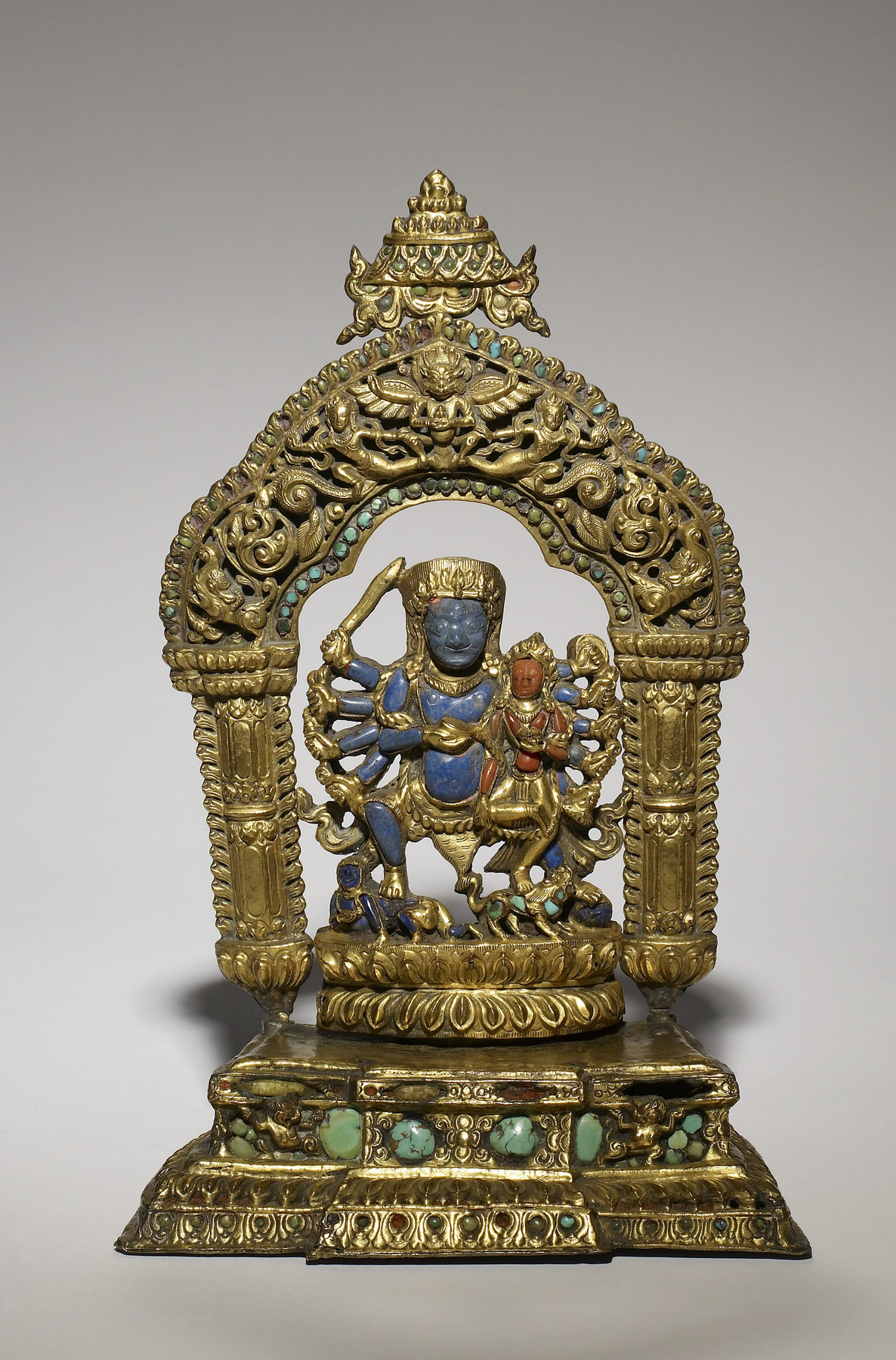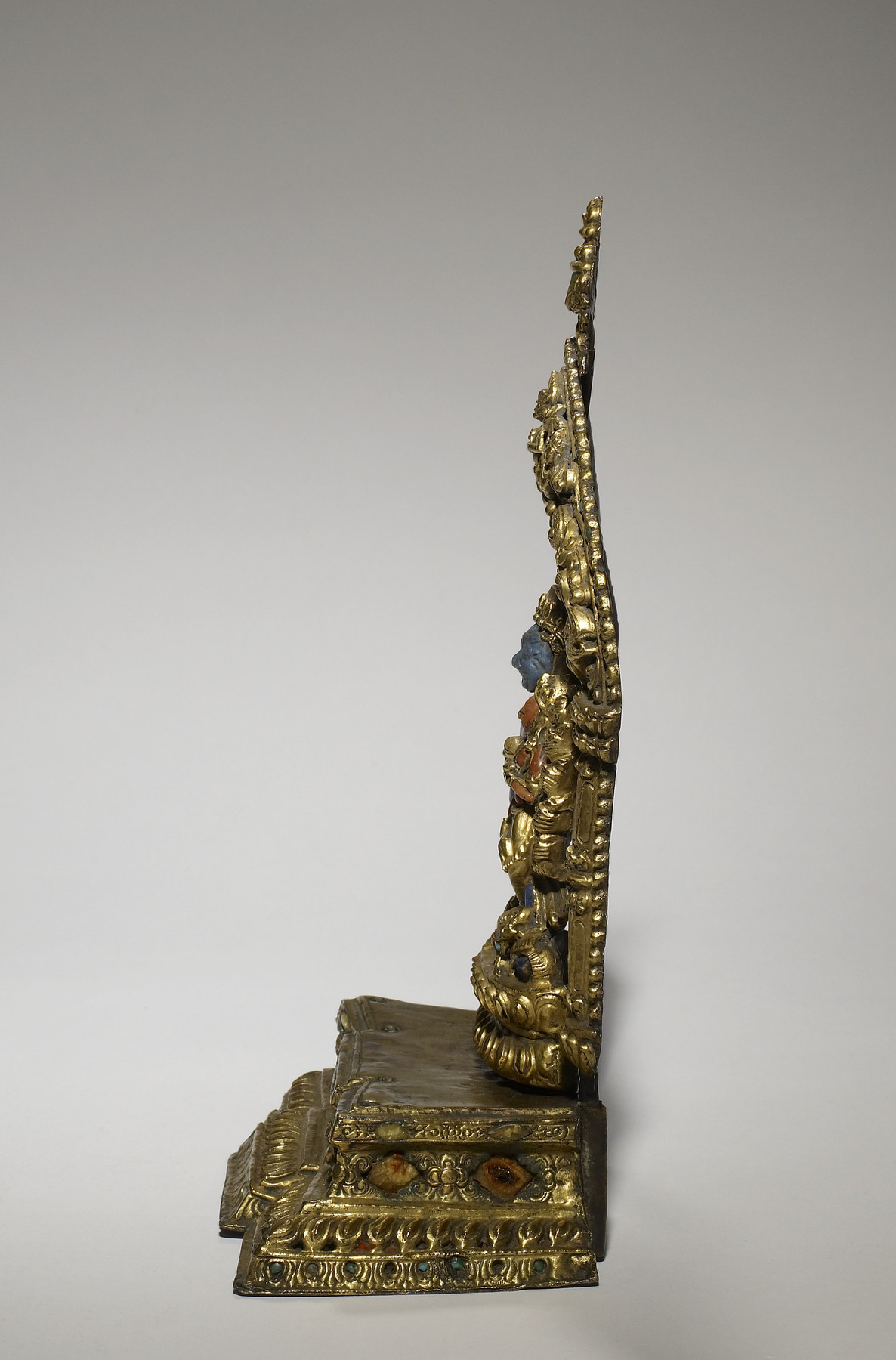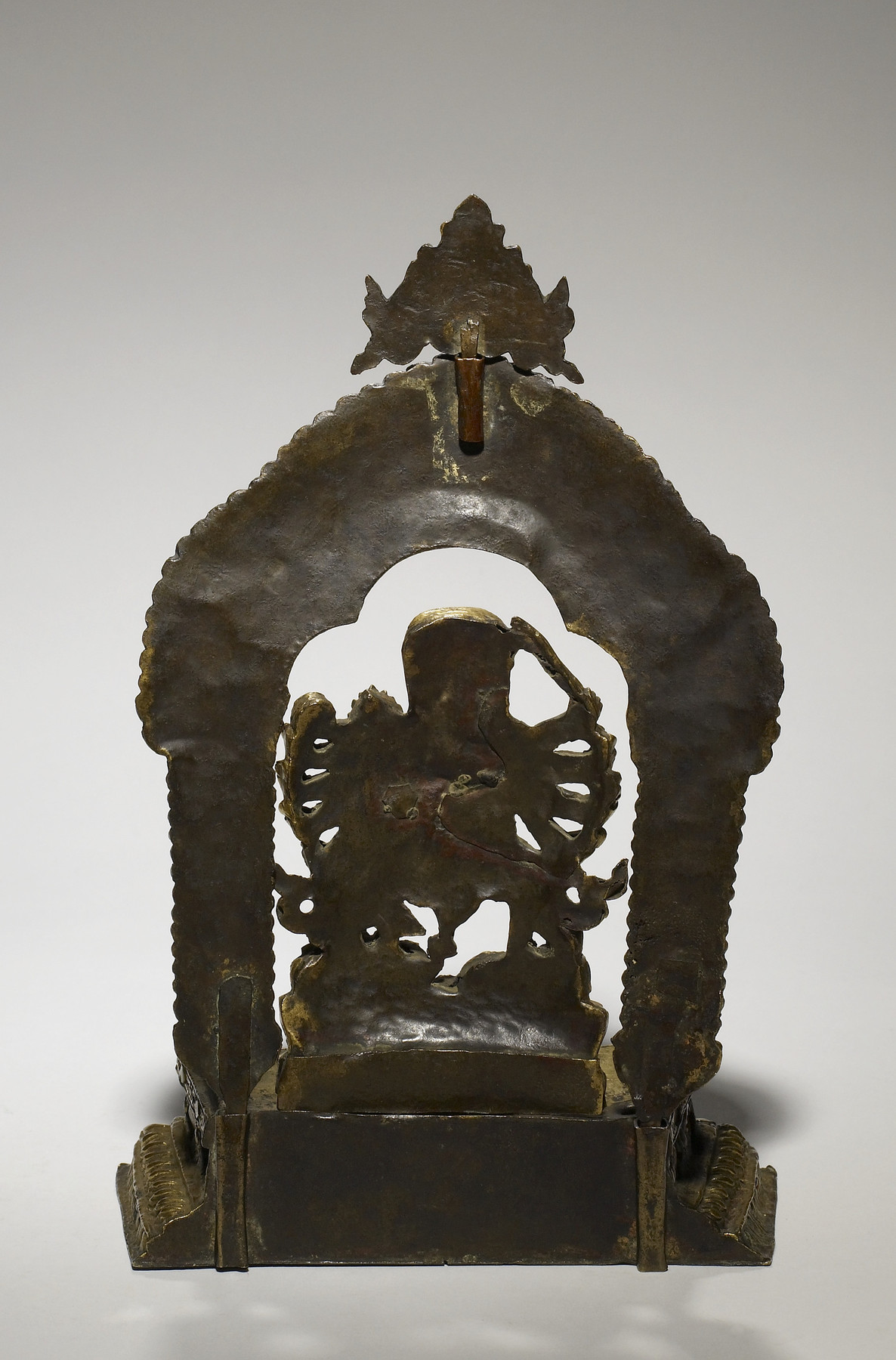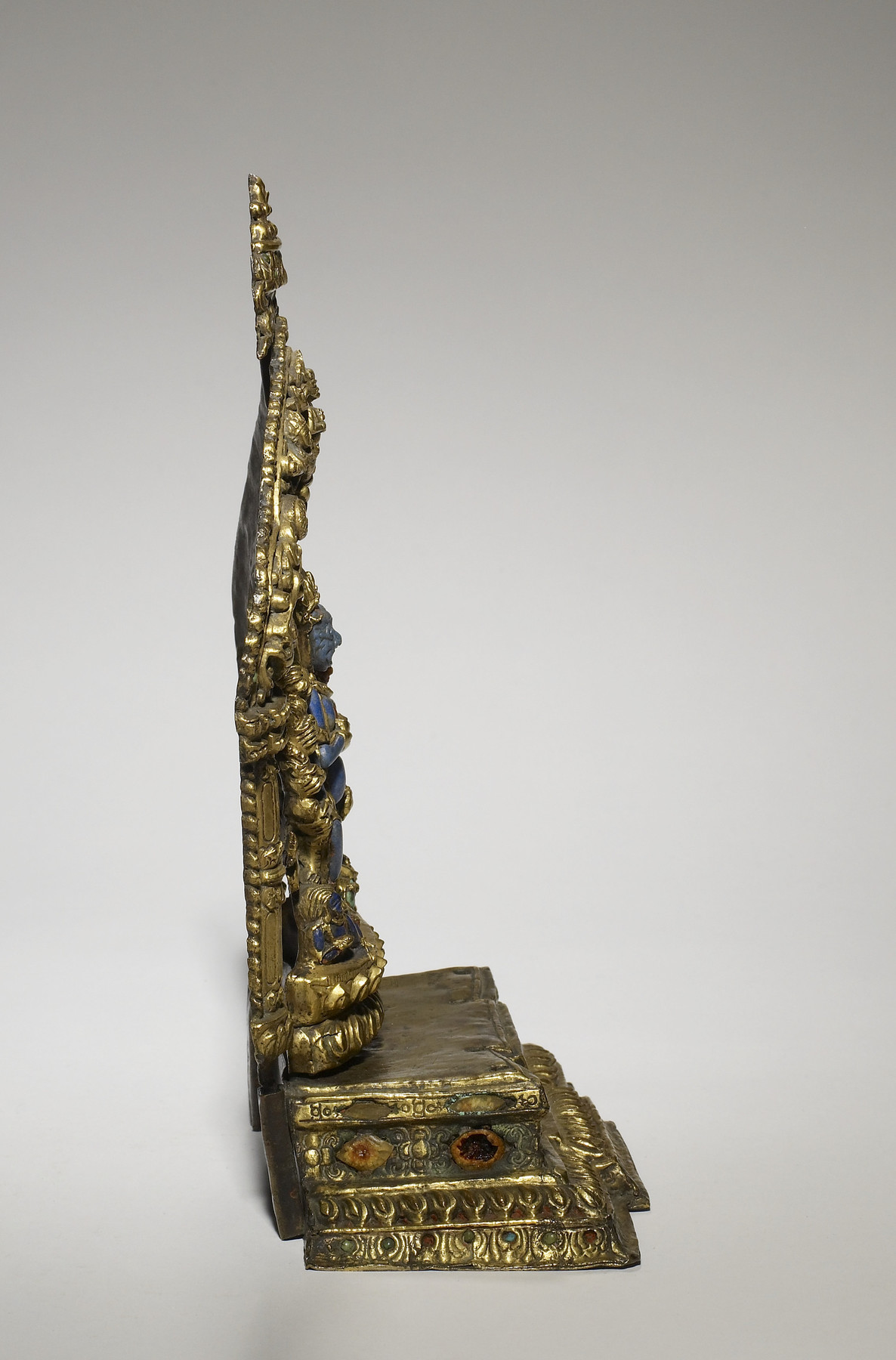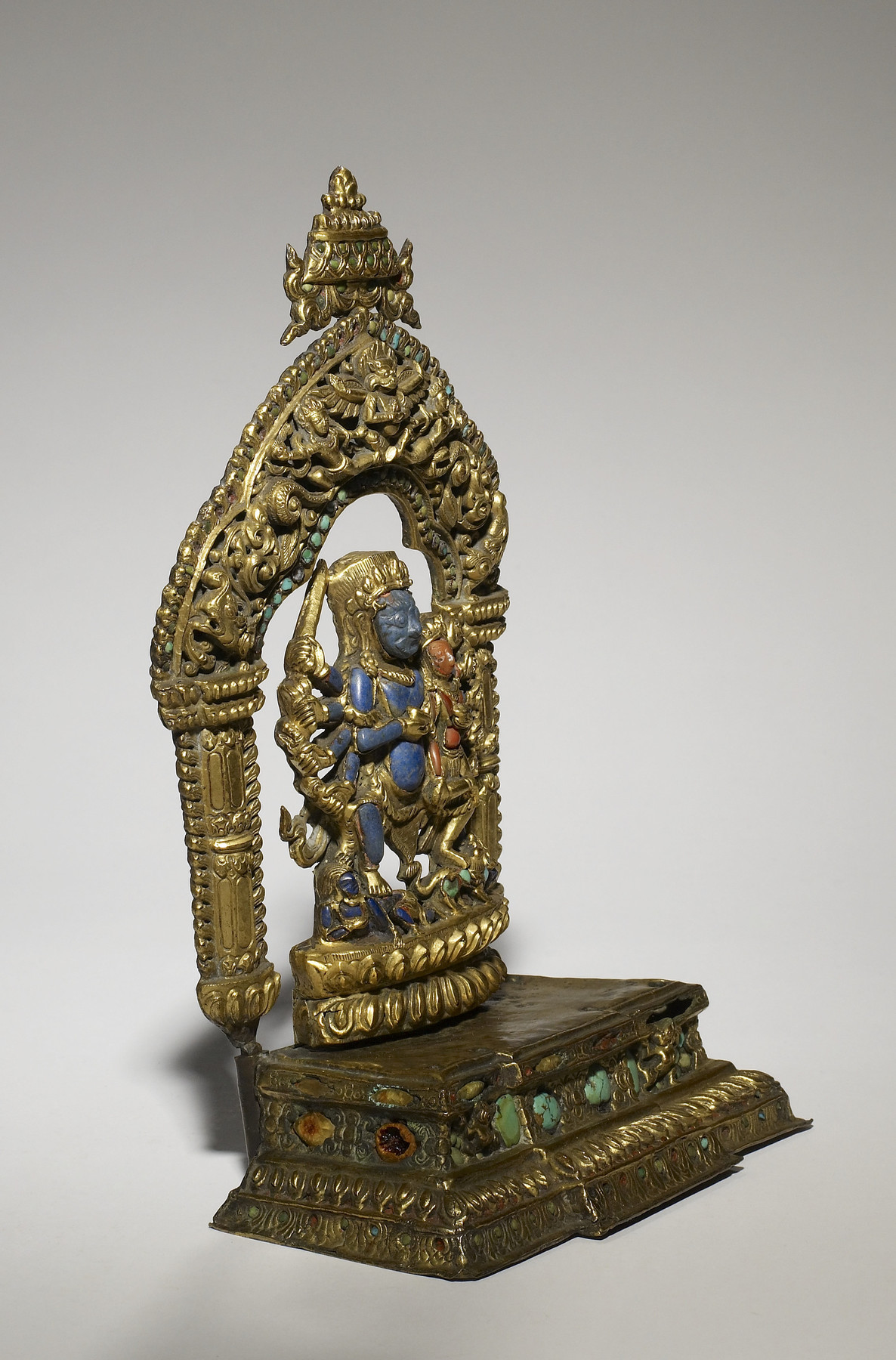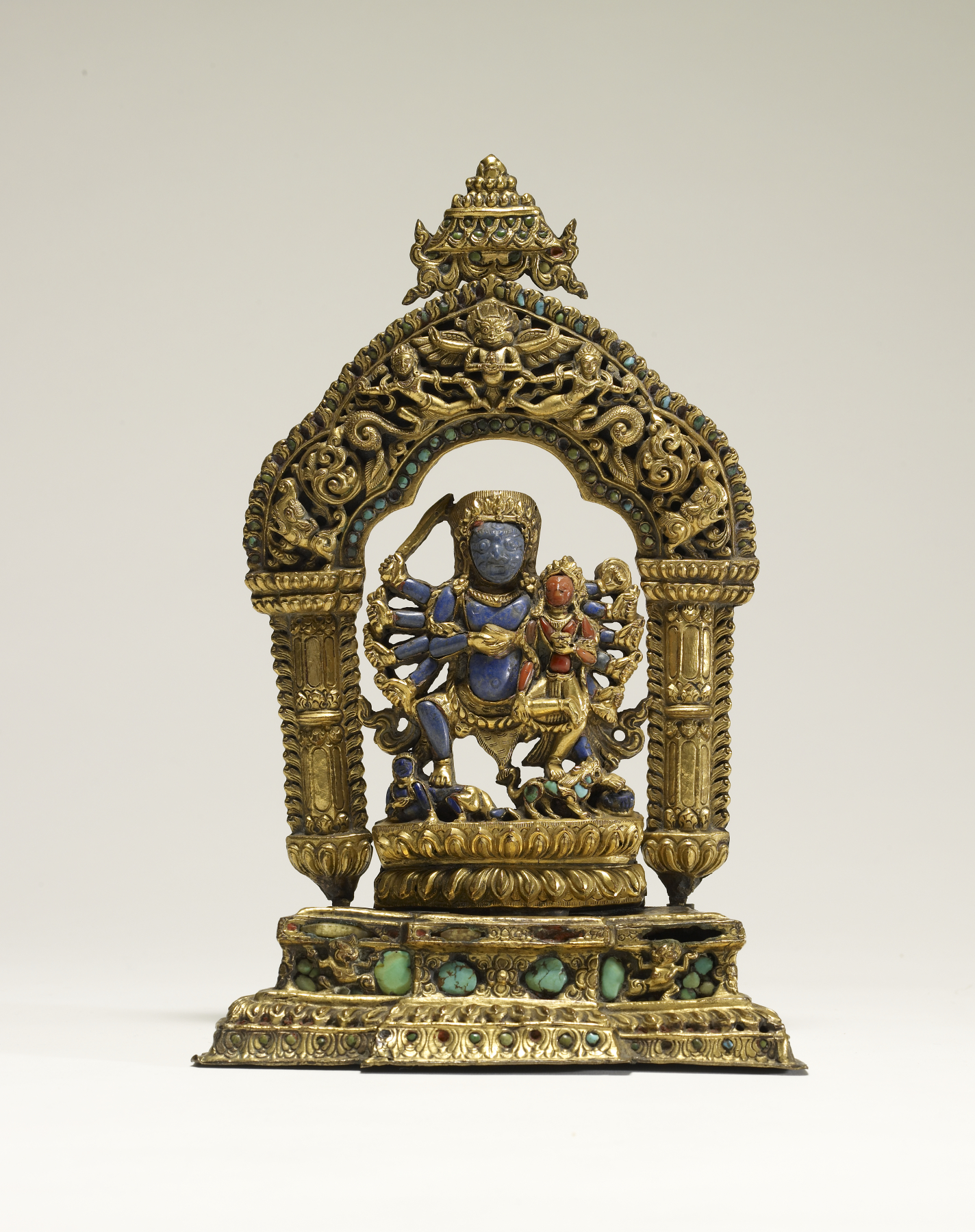Bhairava with Goddess
(India, Nepal, and Tibet)
This blue god of ferocious form and ten arms is Bhairava, the angry manifestation of Shiva. In Nepal, he is popular with both Hindus and Buddhists and is also known as Mahakala. His posture is somewhere in between the militant "pratyalidha" posture of Bhairava and the bent-kneed posture of Mahakala. His stretched left leg is sufficiently bent to balance his spouse on the thigh, while the right presses down on his mount, who is the man ("nara"). Nine of his ten arms radiate symmetrically on either side, except one that holds the skull cup against his chest. The others hold various weapons and emblems. By contrast, his spouse only has two arms and sits in the graceful "lalitasana" posture, although not too comfortably. Her dangling left leg rests on her lion mount. The right hand displays the gesture of charity and the left holds a skull cup.
Provenance
Provenance (from the French provenir, 'to come from/forth') is the chronology of the ownership, custody, or location of a historical object. Learn more about provenance at the Walters.
de Sedley Gallery, New York [date and mode of acquisition unknown]; John and Berthe Ford, Baltimore, October 1965, by purchase; Walters Art Museum, 2006, by gift.
Exhibitions
| 2001-2003 | Desire and Devotion: Art from India, Nepal, and Tibet in the John and Berthe Ford Collection. The Walters Art Museum, Baltimore; Santa Barbara Museum of Art, Santa Barbara; Albuquerque Museum, Albuquerque; Birmingham Museum of Art, Birmingham; Hong Kong Museum of Art, Hong Kong. |
| 2000 | Highlights from the Collection of John Gilmore Ford and Berthe Hanover Ford. The Walters Art Museum, Baltimore. |
Geographies
Nepal (Place of Origin)
Measurements
H: 9 15/16 × W: 6 1/2 × D: 3 5/8 in. (25.3 × 16.51 × 9.21 cm)
Credit Line
Gift of John and Berthe Ford, 2006
Location in Museum
Not on view
Accession Number
In libraries, galleries, museums, and archives, an accession number is a unique identifier assigned to each object in the collection.
In libraries, galleries, museums, and archives, an accession number is a unique identifier assigned to each object in the collection.
54.3024

